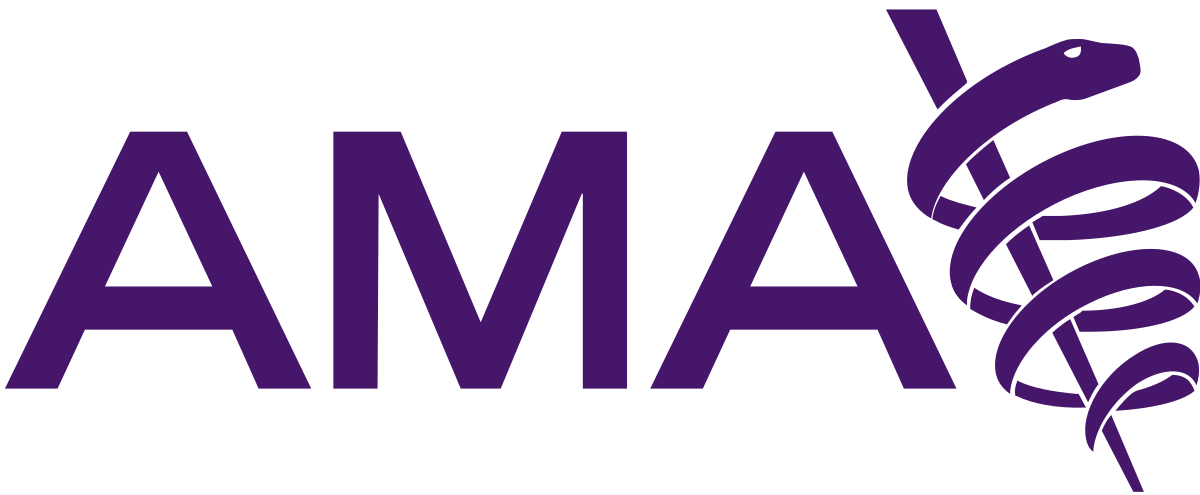by Sara Berg, MS
Senior News Writer, AMA
About a decade ago, Kirk J. Brower, MD, had a profound episode of burnout that lasted months. The bout with burnout followed a leadership decision that affected his career vision. As a result, he became stressed out, cynical, sad and angry while also developing a somatic issue.
But after a compassionate internist took time during an office visit to speak with Dr. Brower, he found a turning point. He realized his work was not worth his health. This experience would set him on a path to becoming a chief wellness officer (CWO) in 2019. It was a career course that he had not envisioned before.
“I give credit to my institution for creating the role, but both the work that I was doing prior to becoming a CWO and my own personal experience contributed,” said Dr. Brower, a psychiatrist and faculty director of the new Michigan Wellness Office at the University of Michigan Medical School. “My previous job was evaluating physicians who came to see me because of a nonprofessional event at work” such as “yelling at a nurse or some other staff member, or not answering pages.”
“In parallel to any potential corrective action that might be taken, people wanted to know if an emotional disorder such as depression might be contributing. If the answer was yes, then I would make a referral for treatment,” he said. “Sometimes physicians did have a diagnosable disorder but more and more of them were burned out. This led to my interest in preventing burnout, rather than dealing with its consequences.”
During a recent interview, Dr. Brower discussed his experience with burnout, what can improve well-being and his plans as CWO.
AMA: Was it just seeing the internist professionally, that helped you recognize your own burnout?
Dr. Brower: I talked with a lot of colleagues. I talked with my spouse. I talked with a lot of people about it but it was really that kind of collegial talk between two physicians at the time, which does not always happen during office visits these days. Some colleagues from other places told me, "You know, Kirk, this is just academic medicine. It's not personal. You should expect these kinds of things." That wasn't necessarily helpful, but later I did come to see that it was true.
Still, burnout for me comes and goes—maybe a few days, maybe a week. That's a wake-up call for me to get back on track, that I'm either doing something that's burning me out or I'm not doing something that I use to prevent burnout.
AMA: Is connecting with colleagues important for reducing physician burnout?
Dr. Brower: Yes. I’m old enough to remember when we had something called professional courtesy, meaning that when you went to see a physician, they didn’t charge you. It was kind of—well, you’re a member of this club.
Now I don’t expect that kind of professional courtesy today, but we need to define what is the new professional courtesy because it’s really about how colleagues treat one another—how I was treated by my internist. We can be judgmental, and we can be competitive—things that got us to be where we are—but they're not things that are going to prevent burnout or get us out of burnout.
AMA: How do you measure burnout and well-being at the University of Michigan Medical School?
Dr. Brower: We use the single item question from the Mini-Z that the AMA has recommended. That works for us pretty well because it's not proprietary and it's a single question. We don't measure well-being as the absence of burnout. That metric really has its limitations.
We also measure other domains that we think are important for well-being that are more positively framed like professional fulfillment or work home flexibility, psychological safety, being able to connect with leaders and feeling valued. We've managed to take questions from our annual surveys and roll them up into the domains that we think are important.
AMA: How often do you measure burnout?
Dr. Brower: Right now, we're doing it annually. Our plan was to do it every six months to have this full survey that covers all sorts of things, but also then to have a more focused well-being survey. The problem is, when we got the results to the full survey last April, we were still analyzing its results in the fall. We're coming up on April again and it's like—do we really want to give another survey when people haven't seen what we did? It’s a lot of information, but now we’re better at doing it.
AMA: What is the overall burnout rate at your organization?
Dr. Brower: The overall rate from the April 2021 survey for clinical faculty was around 50%, which—I think it’s high and it’s higher compared to pre-pandemic. But that number doesn’t really give you a lot of information because it varies by things like gender and specialty.
For example, for subgroups such as the departmental specialties, it ranges from 38% to 75%. In gender, it's 58% of women versus 49% of men. What you really need to know is not just those rates. You really need to know about what's driving the burnout. The rate by itself doesn't help you.
We found that the top three drivers in our institution are things like email, clerical burden, and the EHR. Those things varied from department to department too. Although burnout is a kind of global issue, both within and outside our institution, we've realized that the solutions have to be local and focused.
AMA: Is your focus on reducing some of that administrative burden for physicians?
Dr. Brower: Yes. It also means knowing what that burden is in different places. For example, in some places it may be because they have inadequate staffing. When you look at the response to that question, that also varies widely between departments as well. Sometimes it's the flow of work. Also, it’s maybe due to expectations and demands that are put on from higher up.
It's challenging, but it's fun. When I was doing mostly psychiatry, for the bulk of my time I took care of patients. Now I take care of the organization. And I’m still employing the same skills—a lot of my patients didn’t want to change either.
AMA: What are some of the things you have been doing since you became CWO?
Dr. Brower: One of the things we did was establish a wellness advocate network—and that includes representatives from various specialties and disciplines—because my work encompasses all faculty, staff and learners at our institution, which is about 30,000 people. We meet every other week with that group.
That group consists of representatives from clinical departments, as well as basic science departments, who have been selected by their chair and who have a reporting relationship to that chair. The idea being that we want a representative who can exchange ideas with other advocates from other departments and disciplines, but then have the ear of their chair because we think that it's not only rank and file and front lines, it's also the leaders who need to be part of the conversation. We also developed a grant program that allows advocates to apply for money to do a pilot project in a certain area. Then finally, we developed a faculty associate program where we give selected people, who applied for the position, 20% dedicated effort to devote their time to a proposed area to improve well-being—someone is working on the EHR, someone is working on email, someone is working on vacations.
We don't take our vacations. But what it really comes down to is people don't take vacations because they can't find coverage or it's too hard to find coverage. It can’t be every physician for themselves, which is how it is now. Each department or division has to figure out how they’re going to arrange coverage so that it’s automatic and not so burdensome that you’d rather carry your own pager when you’re on vacation, which no one wants. You need that vacation. You also need to stay home when you’re sick and that’s another coverage area.
AMA: On a panel of chief wellness officers at the American Conference on Physician Health 2021, you shared that whatever an organization’s mission is, it is only going to happen if the workforce is well energized and motivated. How do you ensure that is the case?
Dr. Brower: It's really a question about knowing what energizes and motivates people. For leaders to know what motivates and energizes people who work for them or report to them. The thing is that each person is different.
You know, these blanket initiatives may fail. We all like the ice cream social and the T-shirt giveaways, including myself. But how long is that feeling going to last? Is that really going to empower me to do my work? An effective leader will ask: What can I do to empower people who report to me to do their work? Will my decisions likely reduce their sense of well-being or increase their sense of well-being? It's not just the decisions. It's how you communicate those decisions. People will object if a decision from high on up just comes as a "We're now going to do it this way" without the transparency. It's really about helping leaders to be more effective. The thing about that, whether it's leaders valuing people, respecting them or being servant leaders, it doesn't really cost anybody any money.
AMA: What are some of the lessons you've learned along the way since becoming CWO?
Dr. Brower: One thing is change takes time, but it happens. When I was a young physician after having completed training, everybody smoked in the hospital. Now they don't. What a huge culture change. As we were making that change, a lot of people said, "That can never happen. It will never happen. The patients will go crazy," and that kind of stuff. Relationships with whomever I interact with are the key. As a chief wellness officer, I can't really afford to have anybody other than allies. It's really connecting with people where they're at. And realizing that all challenges are opportunities.




